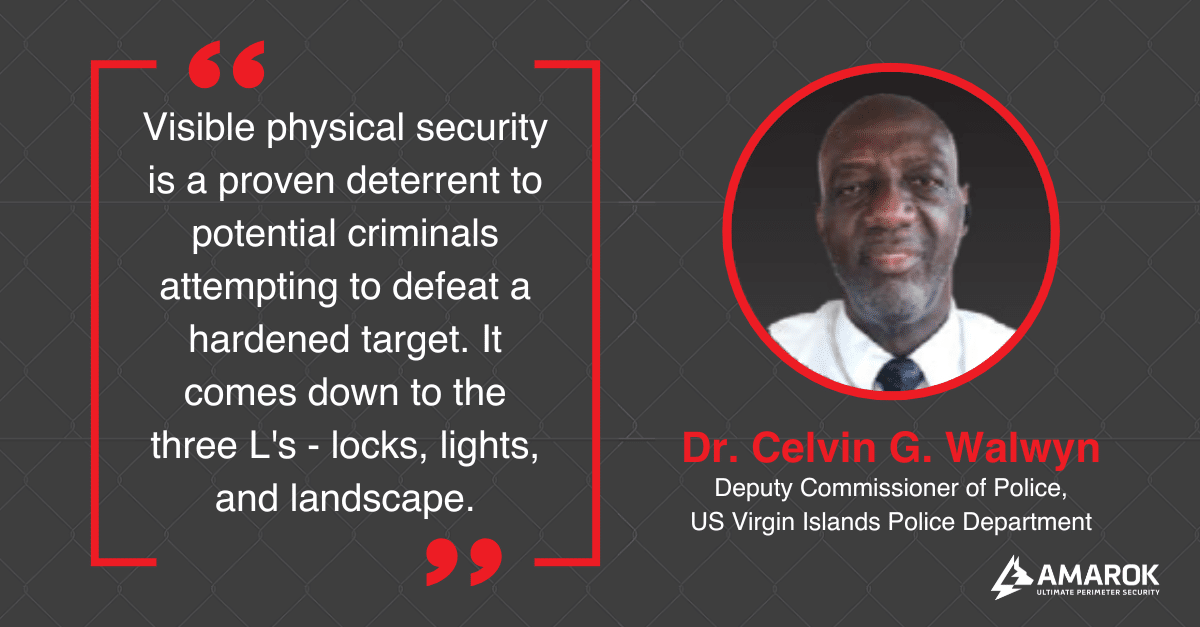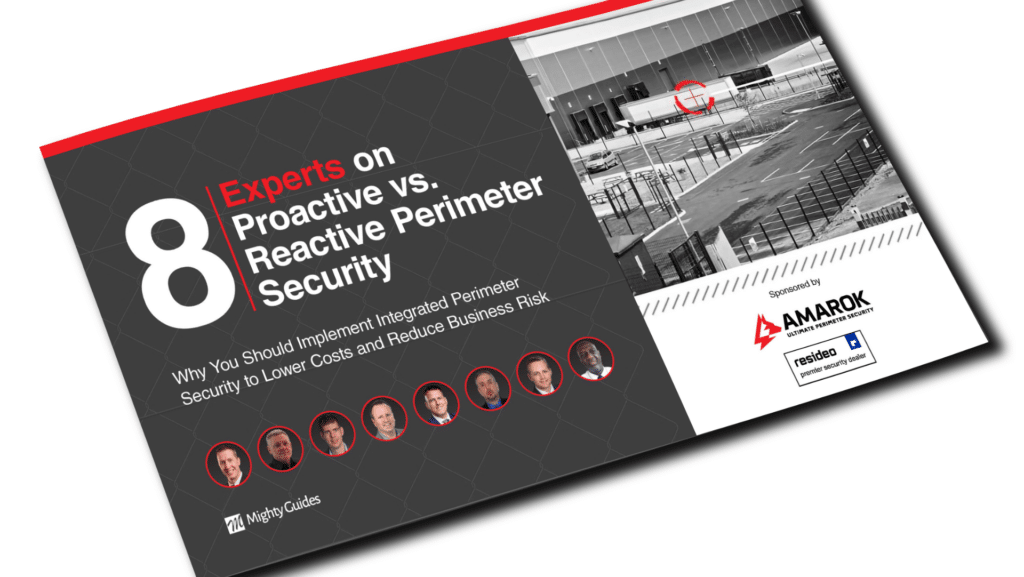Anyone and any place can be a victim of crime. Regardless of socio-economic triggers and local crime rates, even commercial properties in low-risk areas can quickly become high-risk targets for opportunist criminals.
At AMAROK, we have you covered with multiple layers of security and tips on how to take a proactive (and not a reactive) approach to protect your business and its employees. Our team, in partnership with The Mighty Guide, created an Experts eGuide in the physical security profession to discuss the real cost of crime and its impact on businesses.
This ultimate and fully comprehensive Mighty Guide can be accessed HERE. This multi-authored publication gives readers an authoritative and diverse view of Proactive vs. Reactive approaches to securing your perimeter, from your very own team of experts (8 of them to be exact)!
The truth is, criminals only fear highly integrated perimeter security systems, and failing to deter them will result in losses and damage to the reputation of your business.
Consider the following key points, as the real cost of crime is 3x greater than what you think:
The cost of a stolen asset accounts for only half of the total losses; businesses often forget to account for indirect losses.
Physical assets can generally be replaced, but lost revenue is gone forever, and reputational damage is long-lasting.
Insurance premiums typically cover the physical cost of the stolen asset and sometimes only a percentage of it.


Today’s criminals often work for crime organizations and are very well informed about what they’re up against. They’re also highly aware of the capacity of police departments to respond and average response rates.
Traditional perimeter defenses, such as chain link fences, are the go-to solution for commercial properties. However, they provide a false sense of security. They aren’t intimidating enough to criminals, can easily be breached, and do nothing to alert you of the intrusion.
A multi-layered approach is the only solution effective at deterring criminals. This can include measures such as high fences, wires, steel poles, cameras, lights, alarms, electric fences and physical shock deterrents. While one layer may be defeated, the remaining layers continue to offer protection.
You can learn more about our multi-layered security systems HERE.
Some key points to remember when considering potential security systems:
While security cameras can capture a crime occurring, they don’t necessarily work as a deterrent; reviewing footage after the event is futile.
Only a multi-layered approach is fully effective at deterring criminals. While one layer may be defeated, the remaining layers continue to offer protection.
Police are more likely to respond sooner to an integrated verification system combining multiple alarms and video footage.
Investing NOW in your security is all gain and no pain.
To justify the cost of investing in perimeter security, businesses need to weigh the risk level versus the total cost of a breach.
With security as a managed service, upgrades and maintenance costs are covered and businesses save significantly.
Investing in security as an operational expense is often more manageable than a substantial capital investment.
The consequences of waiting until after you’ve been targeted are dire.
Implementing security measures after a break-in is too little, too late; the damage is done, and the costs will easily mount up.
Once a company becomes a victim of crime, it’s much more likely to be targeted again.
Implementing reactive security measures can easily result in siloed solutions that don’t work together to improve security.
At the end of the day, companies need to know that their employees are safe and that they’ll be able to uphold their promises to suppliers and stakeholders. By demonstrating a commitment to security, companies can lower the risk of doing business with them and gain a significant competitive advantage. Businesses should approach physical security audits, policies, and standards in the same way as cybersecurity; the risk is very real for both.
The proactive-reactive distinction matters. It can be easy for businesses to overlook the bigger picture. They focus on potential losses to physical assets while forgetting the importance of deterrence, which can prevent major indirect losses, like service interruptions, delivery failures, product/supply shortages, and personal safety. That bigger picture needs to be incorporated into every company’s planning to mitigate the risk of security measures falling short.
To protect your physical assets and reduce business risk, an integrated multilayered approach to perimeter security is vital.
For the full copy of the Mighty Guide sponsored by AMAROK – Click HERE>




